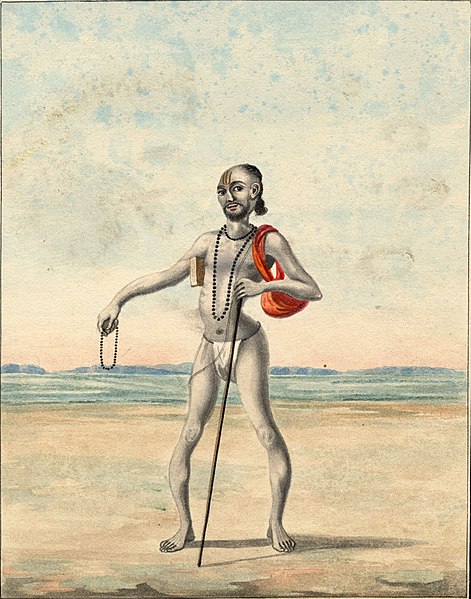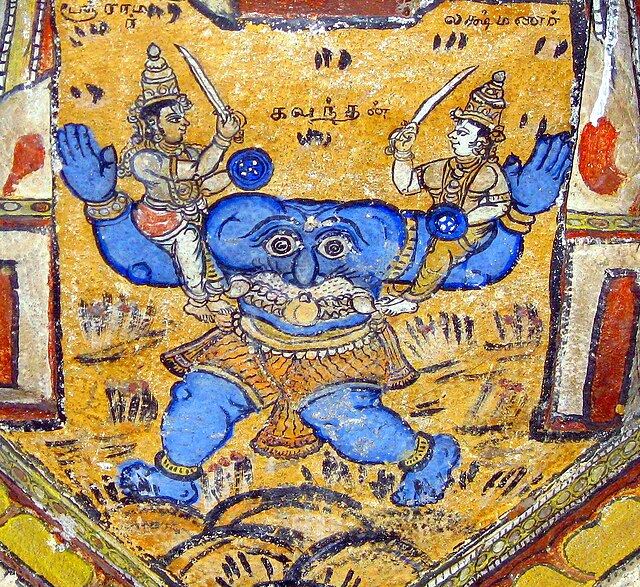Ashtavakra is a revered Vedic sage in Hinduism. His maternal grandfather was the Vedic sage Aruni, his parents were both Vedic students at Aruni's school. Ashtavakra studied, became a sage and a celebrated character of the Hindu Itihasa epics and Puranas.
Aṣṭāvakra was born with physical handicap and grew up into a celebrated sage in Hinduism, 19th-century painting.
Janaka debating with Ashtavakra. Art from the epic Ashtavakra (2010).
In Hinduism, Kabandha is a Rakshasa (demon) who is killed and freed from a curse by the god Rama – an Avatar of Vishnu – and his brother Lakshmana. Kabandha's legend appears in the Hindu epics Ramayana and Mahabharata, as well as in later Ramayana adaptations.
Rama and Lakshmana seated on Kabandha's arms, about to sever them. Kabandha is depicted with a big mouth on his stomach and no head or neck; though depicted with two eyes, the Ramayana describes him as one-eyed. (Painting on the ceiling of Kodandaramaswamy Temple, Ayodhyapatinam near Salem, probably 16th-century.)
Kabandha was born as a Gandharva – a celestial musician (right) here pictured with an Apsara, celestial dancer. (10th-century Cham "Dancers' Pedestal" of the Tra Kieu style.)
Rama (left) and Lakshamana seated on the arms of Kabandha, about to sever his arms, a 19th-century painting from Tiruchchirappalli.
The exiled princes Rama and Lakshamana were caught by Kabandha, whose arms they severed.






